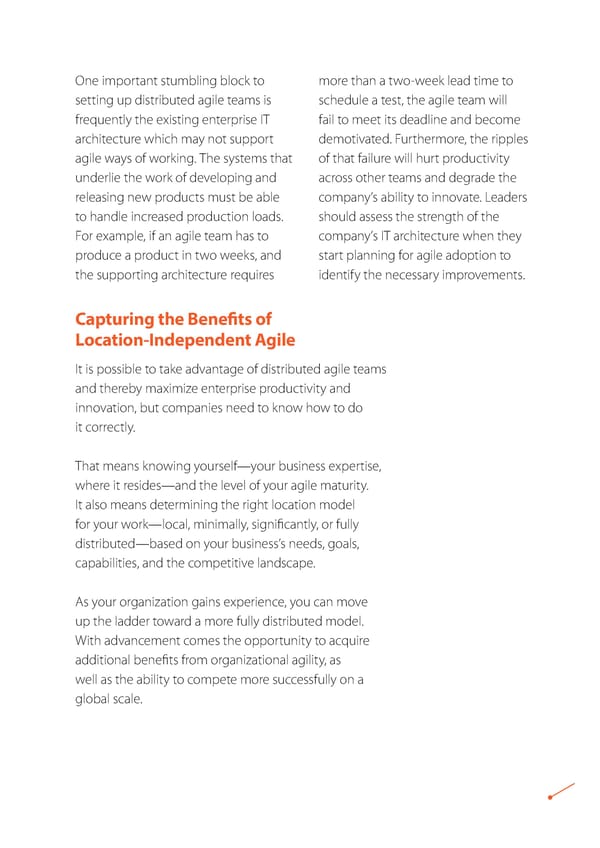One important stumbling block to more than a two-week lead time to setting up distributed agile teams is schedule a test, the agile team will frequently the existing enterprise IT fail to meet its deadline and become architecture which may not support demotivated. Furthermore, the ripples agile ways of working. The systems that of that failure will hurt productivity underlie the work of developing and across other teams and degrade the releasing new products must be able company’s ability to innovate. Leaders to handle increased production loads. should assess the strength of the For example, if an agile team has to company’s IT architecture when they produce a product in two weeks, and start planning for agile adoption to the supporting architecture requires identify the necessary improvements. Capturing the Benefits of Location-Independent Agile It is possible to take advantage of distributed agile teams and thereby maximize enterprise productivity and innovation, but companies need to know how to do it correctly. That means knowing yourself—your business expertise, where it resides—and the level of your agile maturity. It also means determining the right location model for your work—local, minimally, significantly, or fully distributed—based on your business’s needs, goals, capabilities, and the competitive landscape. As your organization gains experience, you can move up the ladder toward a more fully distributed model. With advancement comes the opportunity to acquire additional benefits from organizational agility, as well as the ability to compete more successfully on a global scale.
 The Essence of Agile Page 19 Page 21
The Essence of Agile Page 19 Page 21